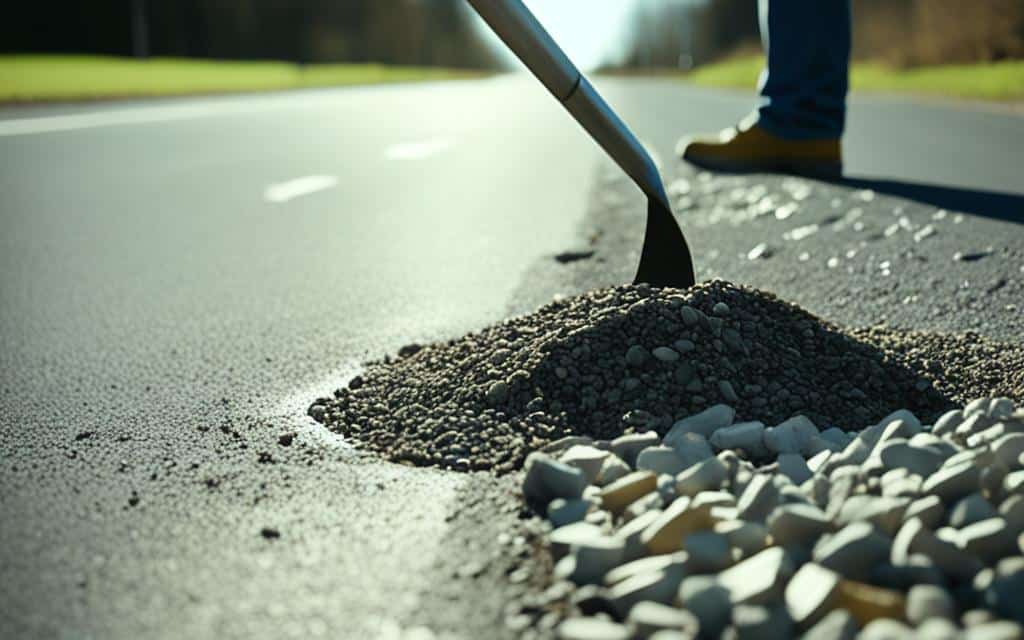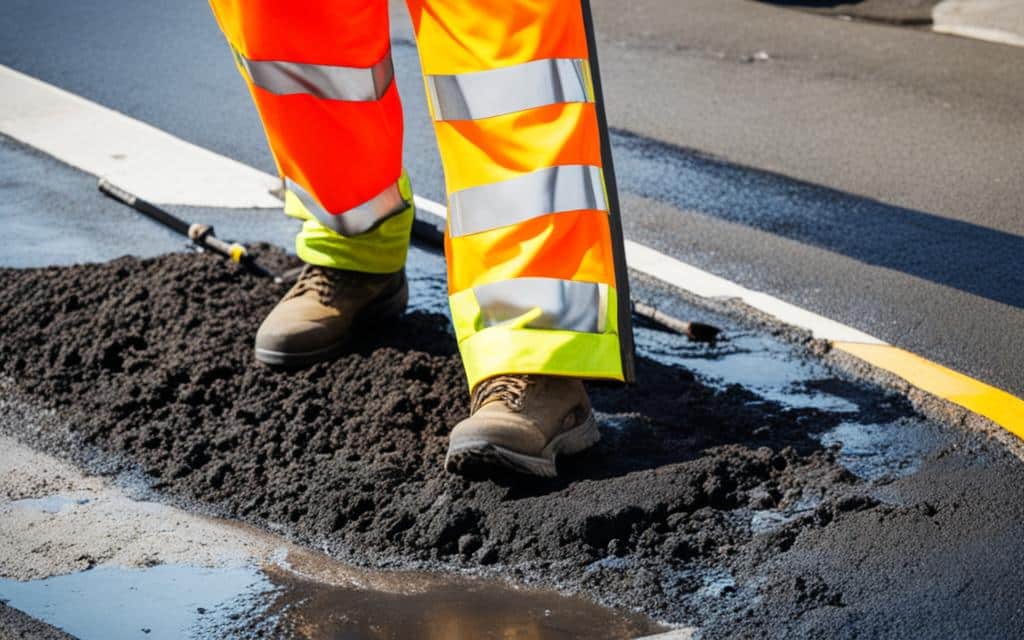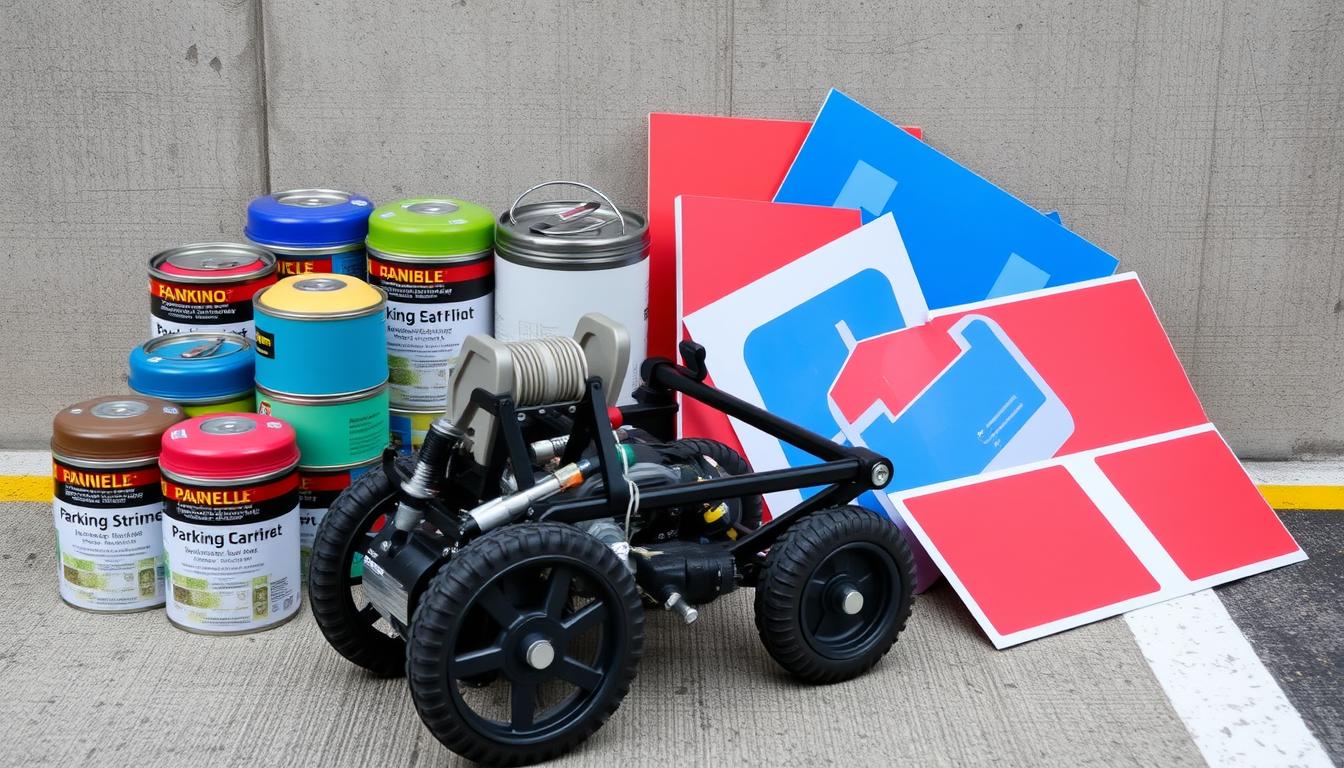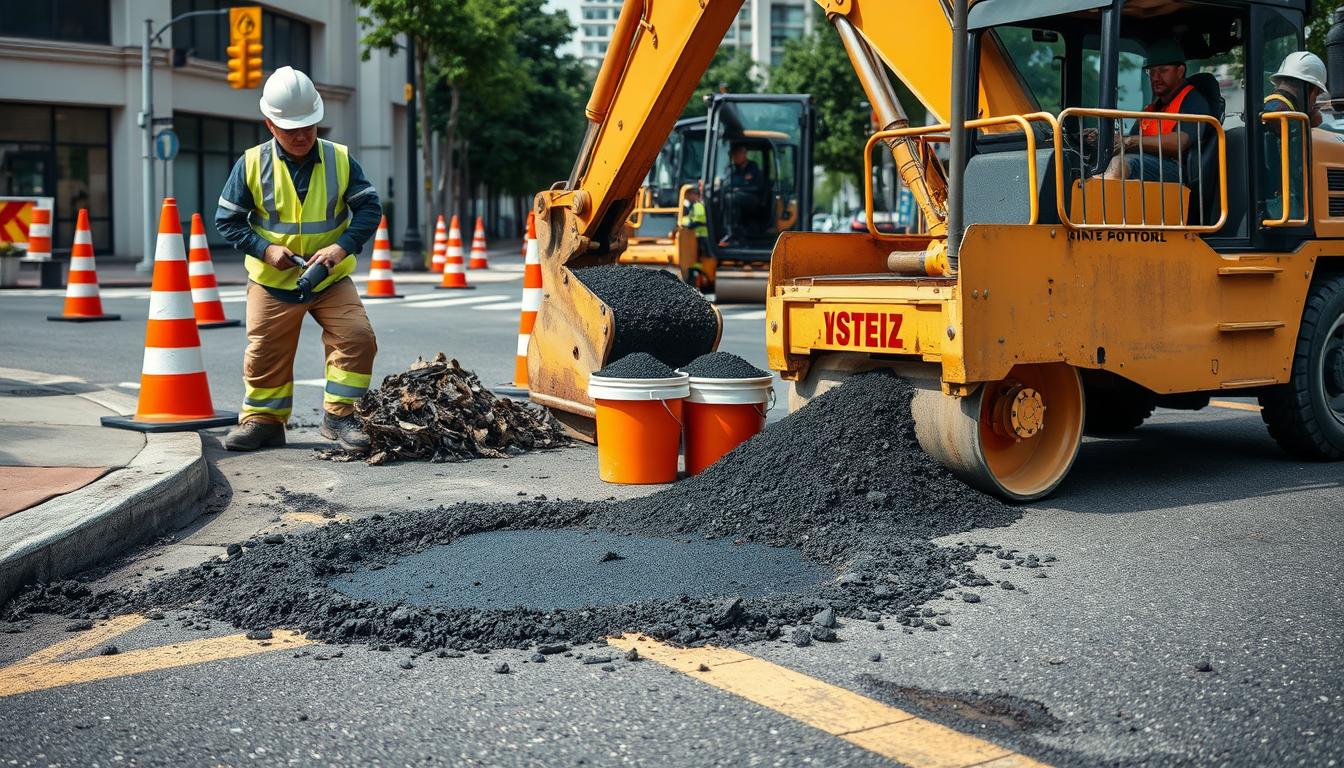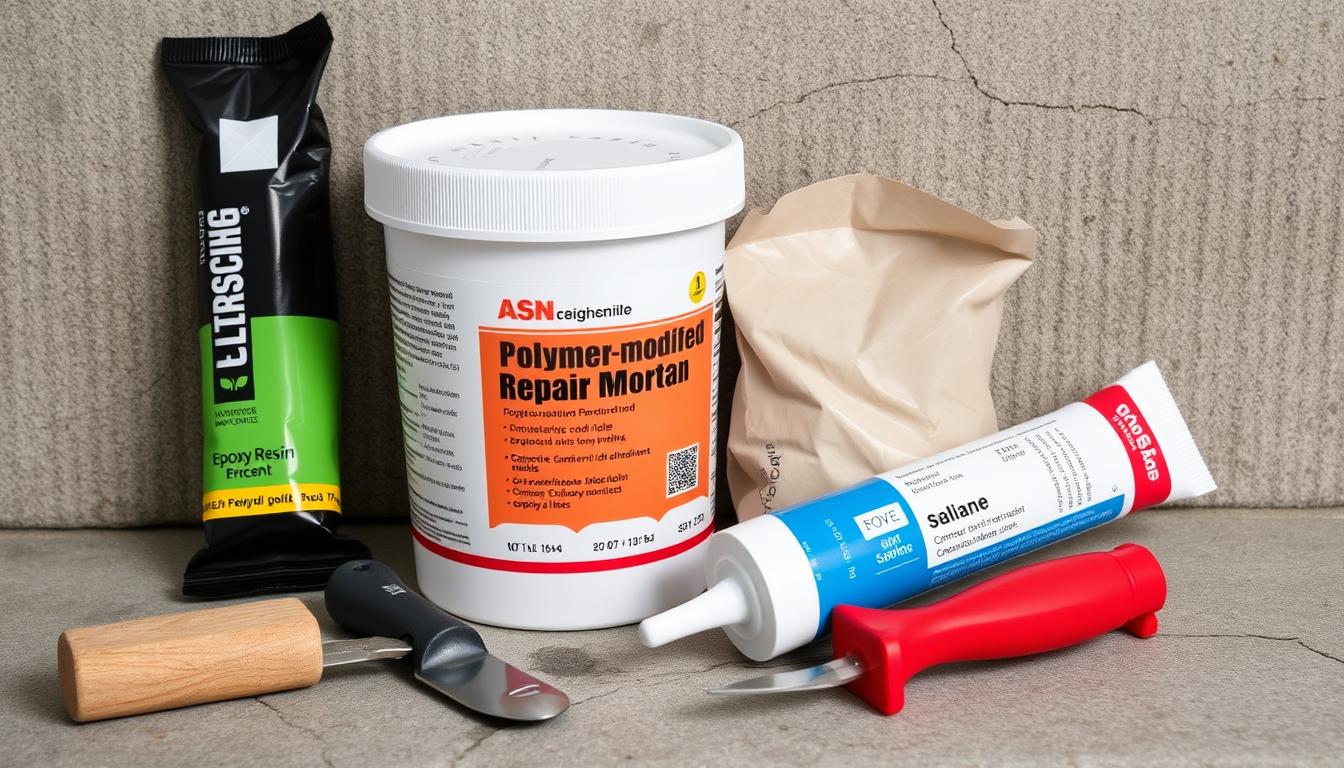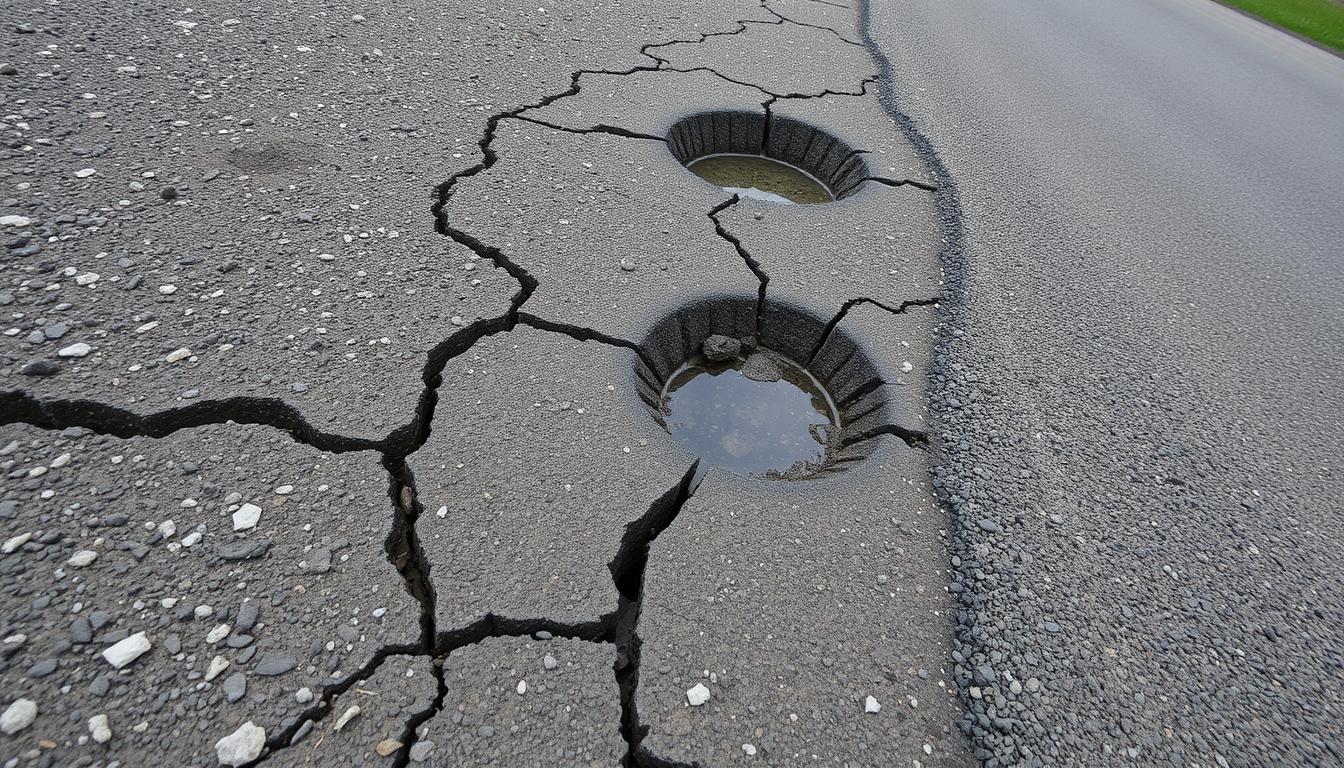Potholes are a big problem on our streets and in parking lots. They get worse after cold winters. Finding the best way to fix them is key.
There are a few ways to fix potholes. You can use pothole patching, mill patching, or dig-out patching. The choice depends on the pothole’s size and what you want for the road.
Let’s look at how to fix potholes. I’ll help you find the best option for your situation. Keep reading to make your road smoother and last longer.
Key Takeaways:
- Potholes can cause significant damage to asphalt surfaces, and it’s important to address them promptly to maintain road safety and prevent further deterioration.
- There are three main options for pothole repair: pothole patching, mill patching, and dig-out patching.
- Pothole patching is a quick and inexpensive solution, but may not provide a long-lasting fix.
- Mill patching involves removing the damaged asphalt and replacing it with new asphalt, providing a more durable repair.
- Dig-out patching is the most permanent solution, involving the complete removal and replacement of the damaged asphalt.
- Contact HT Paving for all your pothole repair needs in San Mateo, CA, and surrounding areas.
Pothole Patching
Pothole patching is a fast and affordable solution. It uses a special asphalt mix to fill potholes. A team fills and smooths them over in just a day.
This method saves money and time. It’s perfect for temporary fixes when big repairs aren’t planned. It lasts about a year, providing a quick fix.
But, it doesn’t solve the root cause of potholes. It only covers them up temporarily. For a lasting fix, other methods are better.
Mill patching is another option. It removes old asphalt and replaces it with new. This method lasts longer. Ignoring potholes is a big mistake. Dig-out patching also exists, where old asphalt is removed and new is put in, like in new construction.
Mill Patching
Mill patching is a strong fix for asphalt, better than just filling potholes. It’s great for parking lots or driveways with some wear, but not too much.
About two inches of the top layer are milled off. Then, new, compacted asphalt is put in. This results in a smooth surface that lasts longer than just filling potholes.
But, mill patching can lead to cracks showing after cold and hot weather. These cracks might show through the new asphalt. This doesn’t hurt how strong the fix is, just how it looks.
Choosing mill patching means using strong materials for filling. They can handle all kinds of weather and are used without wearing out fast. This choice makes sure the repair is long-lasting and safe for driving.
Dig-Out Patching
Dig-out patching is a standout repair method for potholes. It ensures lasting results. This way is different because we take out all the bad asphalt in a 6’x6′ area around the pothole. Then, we fix the base by re-grading it. This makes the repair strong for a long time.
We remove the broken asphalt and put in about four inches of new asphalt. We make sure it’s packed well with a roller. This gives a strong and smooth surface. It can handle a lot of cars and bad weather. Plus, it cuts down on fixing it again later.
This method is best for deep potholes that other methods can’t fix. It makes the road or parking lot safe and reliable again. It lasts a long time, making it a top pick for experts and people who want high-quality work.
Contact HT Paving for all your pothole repair needs in San Mateo, CA, and surrounding areas.
FAQ
What is the best pothole repair?
The best pothole fix depends on the hole’s size and your budget. You have three main options: pothole patching, mill patching, and dig-out patching.
What is pothole patching?
Pothole patching is quick and cheap. It involves filling the hole with asphalt and pressing it down. This method is affordable but only lasts about a year.
How does mill patching work?
Mill patching is a deeper fix. It removes the bad asphalt and adds new asphalt, then presses it down. This method lasts longer than patching but might crack in cold weather.
What is dig-out patching?
Dig-out patching is the most durable option. It removes the bad asphalt and replaces it with new asphalt. This method creates a strong fix that lasts longer than others.

